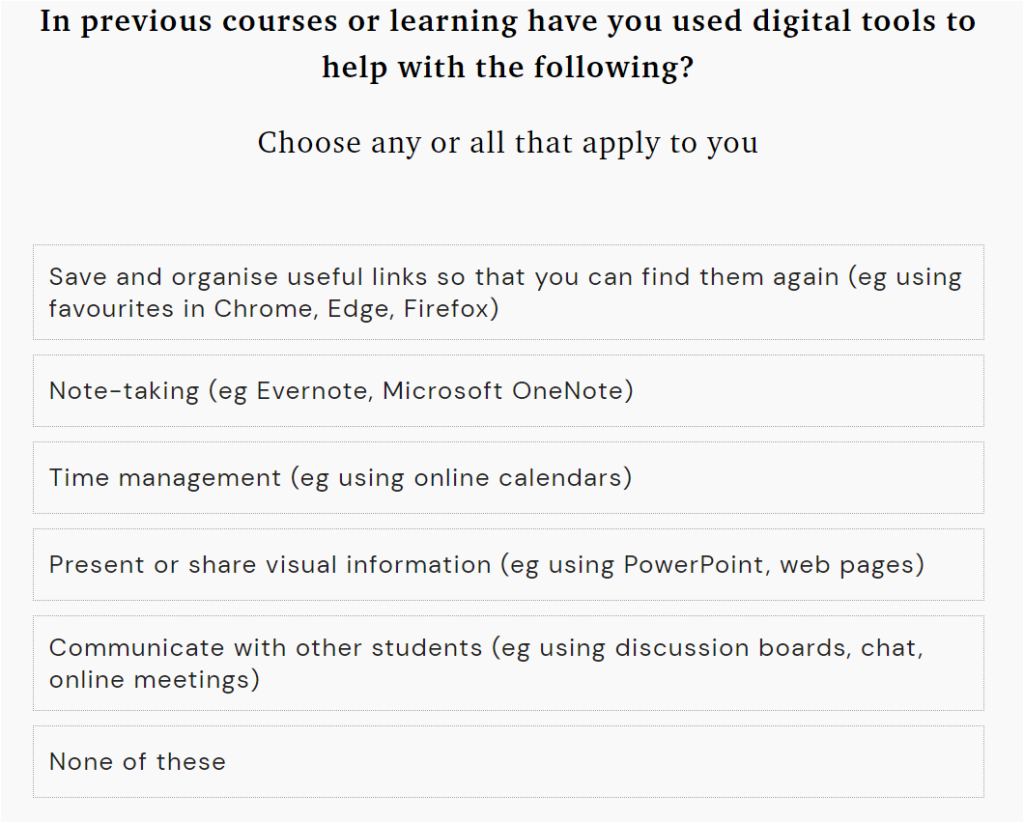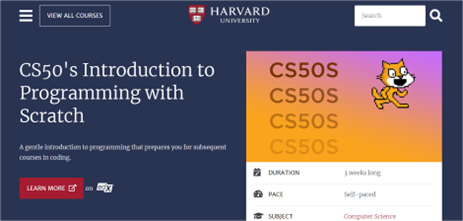
Digital skills have always been in high demand and with much of life embedded in digital technology, being able to use basic apps and software is no longer a ‘nice to have’, but a necessity.
Spearheaded by the pandemic, most universities and colleges have transformed the way they teach and deliver courses. Virtual classrooms and collaborative software are now the norm – and this cultural sea-change has shifted students into more innovative ways of learning.
The Discovery tool is one such innovation, a unique platform created to help students elevate their digital skills and meet specific challenges for college, university and their chosen career path.
The tool has been designed to help students uncover their digital strengths as well as any weaknesses, so they can pinpoint performance gaps, and upskill more easily.
Through its design, the tool can pick out particular areas where a student might benefit from learning a new piece of tech, develop a new skill or perfect an existing one. In addition, it may offer a new perspective on what they already know.
Questionnaire and tailored feedback
When a student first accesses the discovery tool, they’ll be asked to complete an online questionnaire, which takes approximately 20 minutes. Rather than being a test, the questionnaire is more of a reflective exercise to help students self-assess their existing digital skills more thoroughly.

Once completed, the tool will automate a feedback report which is tailored to each student’s specific needs.
In each personalised report, they’ll find six key capability categories along with tips and resources to work with:
- Digital communication, collaboration and participation
- Digital creation, problem solving and innovation
- Digital identity and wellbeing
- Digital learning and development
- Digital proficiency and productivity
- Information, data and media literacies
The six categories cover 16 elements of the building digital capabilities framework and include a wide range of topics, from interpreting and presenting data, to using new software and apps for study. Advice and tips are based on each student’s reflective answers and confidence level according to each category.
Once the questionnaire is submitted the tool selects a playlist of resources that students can start working with straight away.

Catering for all levels of learning
The beauty of the tool is that it’s designed to cater for students across all sectors and subjects. Whether students are studying for a diploma or doctorate, the tool’s questionnaire and feedback report will offer practical support to help each individual elevate their learning. Whereas one student may need resources that can help them identify reliable academic papers online, or an app that can collate and share their findings, another student may need resources that can demonstrate how to edit video and audio, or cite social media in assignments.
Another facet to the discovery tool is that it’s already embedded into the curriculum of many universities and a growing number of colleges throughout the UK. This enables students to use the discovery tool for assessments and assignments, as well as help them with their future career path.
“The discovery tool has been invaluable to me in terms of identifying areas in which I’m less proficient…In terms of future employment, I think from an employers point of view, it’s really handy to have this sort of breakdown of areas, which you have noticed that you need improvement on, and to see that you’ve actively improved on those areas will be really beneficial in the job market ” Michaela Moclair, Creative Writing PhD student, University of Plymouth
Accessibility, technology and neurodivergent learners
For students with accessibility needs, the discovery tool can direct them to the right assistive tech, such as screen readers, writing tools and voice recognition software. The questionnaire captures each student’s responses, so tailored feedback and next steps can be offered. This could include utilising a specific device, or downloading an app that can adapt learning materials into more accessible formats.
These resources are also intended to raise awareness around accessibility and inclusion for all students, so they can reflect on how these issues may impact members of their peer group.
For neurodivergent learners (dyslexia, dysgraphia, hyperlexia and other spectrums), the feedback report may offer tips on how to make adjustments to their personal device, so operational systems are easier to use and suit their needs more precisely. Alternatively, it may suggest ways they can reach out within their college or university to access additional support.

Over 800 curated resources
The discovery tool has over 800 resource cards which are categorised into the six key digital areas (playlists).
Each resource card either links to a single resource, such as a blog or article, or to a whole set of resources offered by different education platforms such as FutureLearn, Microsoft Learn, Google Applied Digital Skills, ICDL Professional and iDEA.
There are also links to specialist resources from numerous higher education providers including the University of Edinburgh, the Open University, University of Leeds and Harvard.

Resources range from toolkits and online courses, to MOOCS, micro-modules, guides, blogs and how-to videos. Each resource takes account of emerging technologies such as Artificial Intelligence (AI), the internet of things and datafication, along with the most up to date phenomena that’s emerged since the start of the pandemic.
Within the discovery tool, resource playlists can be bookmarked and saved for easy access. Likewise, the questionnaire can be re-taken so students can compare their report results and keep track of their development.
Students are free to either follow the tips and advice given in their feedback report, or they can surf the 800 plus individual resources in their own time.
Part of the curriculum
Another key aspect of the discovery tool is that tutors and lecturers also have access. This gives academic staff the option to set assignments and tasks via the tool which students can incorporate into their coursework. In addition, each subscribing university or college has the option to add tailored resources that are relevant to their department or faculty.
Although each student’s data is private and only visible to them, the tool allows students to make notes and share resources with their peers and tutors. Students also have the option to use the report as part of their tutorial, to map progression and overcome any challenges.
The team behind the discovery tool
The Jisc building digital capability service and student experience experts team have been supporting universities and colleges to improve the digital student experience for over two decades. Since its launch in 2018, the discovery tool has broken ground in supporting the digital transformation across the majority of the UK’s universities and a growing number of its colleges. On the back of this success, the tool continues to be utilised outside the UK, in higher education settings throughout Australia, Switzerland and Singapore.
On the 1st of August 2022, Jisc launched an upgraded version of the tool retaining all the best facets of the original, but with additional features such as an interactive playlist, note creation tool and the option to compare past and previous reports.
Easy to access
As long as students have internet access, they can view the tool on any device including their mobile, tablet or pc. All they need to do is sign up at jisc.potential.ly and can use our user guide if they need more information on how to do this. The discovery tool is also available in the Welsh language.
Author – Kate Maclean, Copy & Content Writer, Data analytics , Jisc
You can also follow us on Twitter and LinkedIn to keep up to date with Jisc data analytics.

